
As we already saw for "The Lucky Adventurer", the "source" for this movie was another popular novel by Yamaoka Souhachi, "Tokugawa Ieyasu" in fact, serialized from 1950 to 1967 on newspaper; from what I could see, the story stops at the third volume of the novel, featuring the introduction of the Oda clan and ending with the Battle of Okehazama.
Our first meeting with Nobunaga is during the captivity of Ieyasu (named Takechiyo) by the hands of the Oda.
Nobunaga is intrigued by the strenght, smartness and dignity of the little boy and offers him his friendship, sympathizing with the forced distance of his mother.
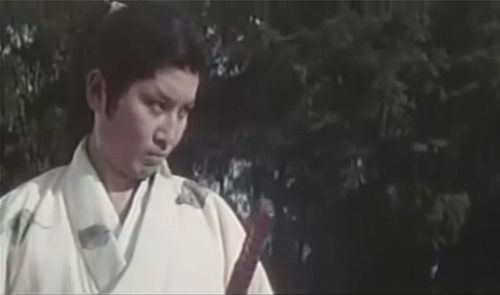
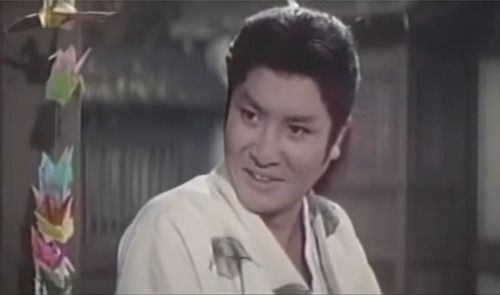
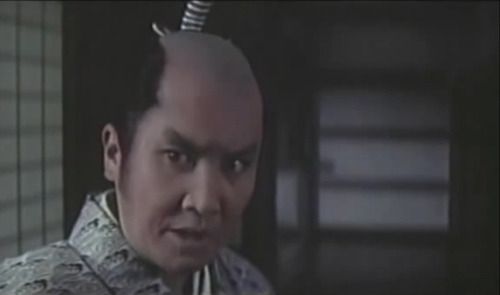
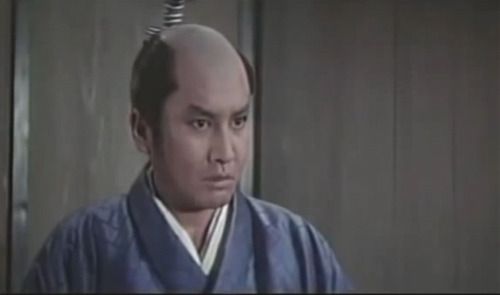
The portrait of Nobunaga in this movie is quite intriguing.
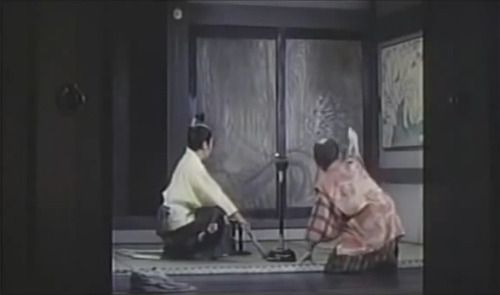
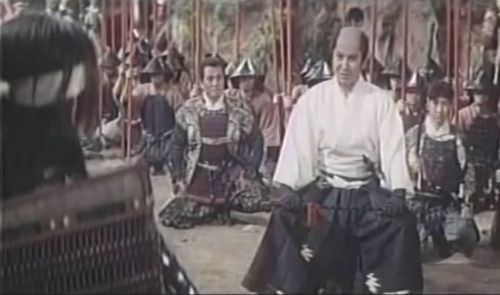
His eccentricity has the genuine taste of the strong man, and he's far from being portrayed as someone who needs someone to take "care of him".
He's surrounded by vassals, helpers and assistants but he's the one putting his men to use and not the opposite.
The first relevant action that Nobunaga did even as a young lad was taking care of his fellow countrymen. In the scene where he got to meet with Otai, Ieyasu's mother (Ineko Arima), he's showing as teaching kids to sing and dance so that they can sustain themselves.

Behind his eccentricity and roughness he's actually the caring type --Not sure how historically accurate it may be, but sure it's a reassuring thing for the audience to assume that they are led by responsible fellows.
Hideyoshi is played by Kei Yamamoto:
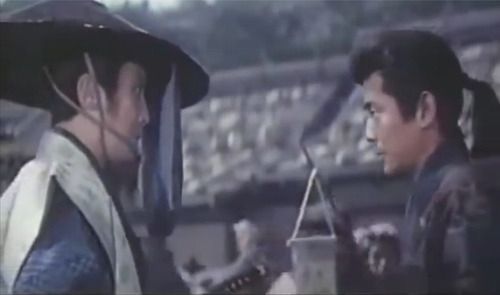
Nobunaga used to meet him at the market by Kiyosu's castle, but later on he's showed as servicing him as a proper informer: "I know everything in-between Heaven and Hell" is his catchy motto!
In this movie both Imagawa Yoshimoto (Kou Nishimura) and his uncle advisor Sessai (Koreya Senda) managed to get a good deal of screentime, and are immediately portrayed as the shrewd villains of the movie.
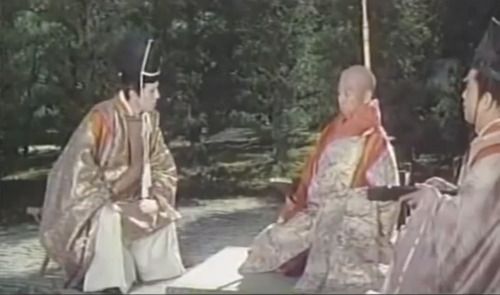
How he used up the strenght and resources of his "forced allies", the Matsudaira, placing them on the vanguard of his army to do all the dirty job for him, was pointed out by Nobunaga as a reason to hope for Ieyasu's support.
Nou-hime was played by Junko Miyazono, and her presence in the movie was not very relevant.
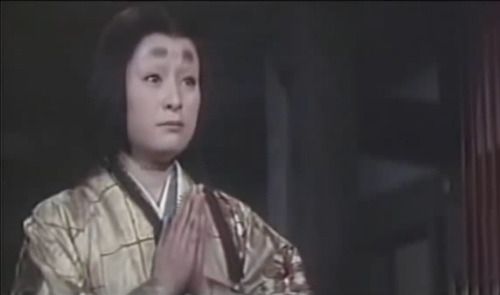
A dignified rendition, but just worth a note for the sake of a complete review.
On a fangirly note, an actor playing as Iwamuro Nagato-no-kami, Nobunaga's favourite page during the Kiyosu days-- YEEEE!
He's Koujiro Kawakami and he's a pretty boy!

Pages and warriors are also the special feature of the Atsumori of this movie; a real show that Nobunaga presented to everyone, expecially to Nagato, that, as Nobunaga jokes, by now he should be bored to see:
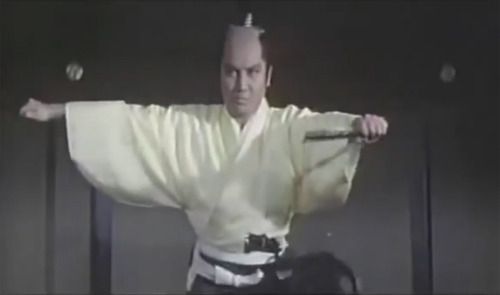
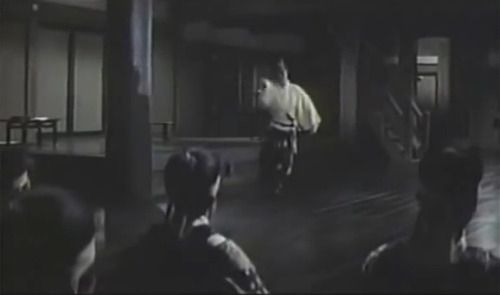
Again, a vigorous, moving performance by our kabuki superstar.
Another interesting bit of this movie that caught my attention is the quick "lucky meal" that takes the place of the usual bowl of rice gulped down while putting up the armour:

I assume that it's some kind of ritual to bring good luck (the word "打ち勝つ" is an expression that means "to overcome")-- I assume that it's also related to the served food... As "katsu" means pork... If you get to know more about this curious ritual, please share your infos!
The Battle of Okehazama is shown while being performed early in the morning and during the famous storm:
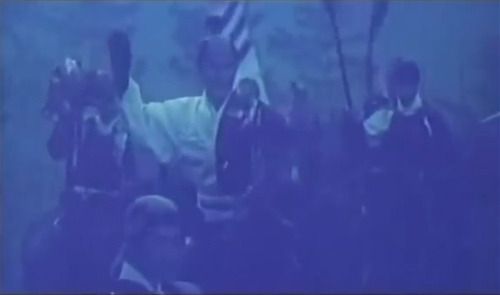
Long story short, an interesting and original rendition of the facts that I suggest you to watch to re-fuel your imagination on the events.
Questa recensione mi ha appassionata molto. Non ho idea di dove trovare questo film, ma farò del mio meglio. L'amicizia tra Nobu e Yasu mi ha sempre interessata! Invece la figura di Sessai mi ha sempre inquietata. Mi fa paura quell'uomo!
ReplyDeleteEccolo, Babins! -> https://www.youtube.com/watch?v=wrEPnkNMYEI
DeleteEheh, a me piace Sessai Il Volpone XD Uno dei pochi personaggi degni di nota dell'entourage di Yoshimoto, escluso qualche fedelissimo :D
No, "katsu" doesn't mean pork. If you were thinking about the katsu from "katsudon", the actual name for a pork katsudon is a "tonkatsu-don", with "ton" meaning "pork". Katsu is the "breaded-and-deep-fried" cooking method XD
ReplyDeleteThat being said, the lucky meal is an old war ritual. "5 strikes of abalone, 7 wining chestnuts, and 5 rejoices of konbu". It's all a pun, because Japanese likes puns. The "uchi" from uchi-awabi (thinly stretched abalone) means means “strike” or “overwhelm”, the "kachi" from kachi-guri (dried chestnuts) signifies “to win” or “victory”, and and kombu (kelp) evokes the word yorokobu, or “happiness” and “delight.” Together they convey uchi-kachi-yorokobu: "we strike, we win, we rejoice".
This meal is to be eaten with 3 cups of sake.
Wonderful, thank you very much for the explanation :D !!
DeleteI forgot to mention, the ritual is called "shikisankon". The important part is actually the sake-drinking, of course. The food is just accompaniment snacks XD
Delete--As usual, ahah >D !
DeleteAnother Ieyasu thing is his taiga drama (1983) I just finished, and it's certainly worth checking out because it has a charismatic and sexy Nobunaga :D He isn't particularly evil either and he has a good relationship with Nohime (who, predictably, dies with him at Honnoji, idk why this keeps happening in so many adaptations). The actor was also young (this was his breakout role) but ages believeably.
ReplyDeleteTanuki of course is a bit too much of a saint, since he's the protagonist, but at least they admit he fucked up his marriage with Sena XD